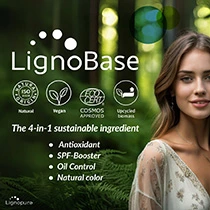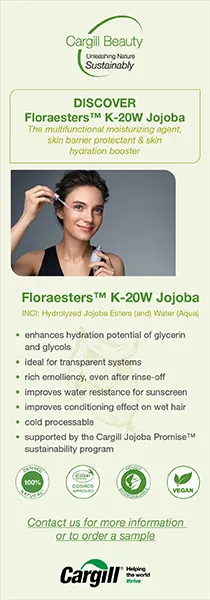Cosmetic doctor unpacks cultural shift behind liquid face lift trend

The aesthetics sector has witnessed a rise in consumers seeking facelift-style results from non-invasive treatments — a growing trend referred to as the “liquid face lift.” The liquid face lift uses clinical injectable treatments such as fillers and biostimulators to achieve a lifted look without surgery. According to industry experts, the aesthetic trend is gaining popularity due to social media and celebrity culture.
Personal Care Insights speaks to cosmetic doctor Dr. Manav Bawa, medical director of Time Clinic & Trainer on behalf of Allergan Aesthetics, about the growing demand for liquid face lifts, what it means for the industry, and how cultural shifts in media are influencing the aesthetics landscape.
“Social media has had both a positive and a negative impact on aesthetic medicine. On the one hand, it has normalized non-invasive treatments and opened up discussions around preventative care and tweakments. On the other hand, it has also created unrealistic expectations, filtered beauty standards, and a rise in ‘DIY’ treatments promoted by unqualified influencers,” says Bawa
“Patients are often swayed by visual trends that don’t always translate well to real life or their unique anatomy. Practitioners must guide them with honesty, safety, and a long-term perspective.”
Meanwhile, increased transparency is influencing the aesthetic landscape. High-profile celebrities and social media influencers are becoming more transparent about the non-surgical procedures they’ve undergone.
This cultural shift is destigmatizing non-surgical cosmetic procedures, building consumer trust, and growing the market for non-invasive procedures.
According to the American Society of Plastic Surgeons, minimally invasive treatments grew by 7% in 2023, outpacing the rise in surgical procedures. These accessible options present a convenient, lower-risk alternative to traditional surgery with minimal downtime. https://www.personalcareinsights.com/news/future-of-cosmetic-enhancements-is-increasingly-non-invasive-report-finds.html
“It’s important not to assume that surgery is the only, or the best, option for everyone. A liquid facelift is an option for individuals who want meaningful rejuvenation but aren’t ready, or don’t feel the need, for surgery,” explains Bawa.
What is a liquid face lift and who is it suitable for?
Bawa: The liquid face lift approach combines structural fillers to restore volume and contour, with regenerative treatments that improve skin firmness and elasticity. The result is a naturally lifted appearance, with added skin quality and hydration benefits. While it will not replicate the effects of surgery in more advanced aging, it offers a powerful, low-commitment alternative that’s effective and reassuring for the right candidate.
 The liquid face lift approach combines structural fillers to restore volume and contour.Facial filler can create a lift by restoring structural support in areas where we naturally lose volume and definition over time. As we age, the fat pads in the face shift and shrink, and the bone resorbs, contributing to sagging and a loss of contour.
The liquid face lift approach combines structural fillers to restore volume and contour.Facial filler can create a lift by restoring structural support in areas where we naturally lose volume and definition over time. As we age, the fat pads in the face shift and shrink, and the bone resorbs, contributing to sagging and a loss of contour.
Filler-based lifting is ideal for patients with mild to moderate volume loss, early signs of sagging, and a reasonable skin quality. However, surgery may be more appropriate if significant skin laxity, heavy lower face descent, or the desire for a permanent result. Patients often prefer to try a non-surgical approach first, and many are surprised by its effectiveness.
How does a liquid facelift compare to a surgical facelift in terms of results?
Bawa: While a liquid facelift does not reposition deeper facial tissues like a surgical facelift, it offers a natural-looking lift, improved definition, and volumization, without incisions, scarring, or general anesthetic.
Recovery is minimal, and results can last between 12 and 24 months, depending on the products used and the patient’s anatomy. It’s ideal for those wanting meaningful facial rejuvenation without downtime and a lower psychological and physical commitment than surgery.
What techniques or product combinations do you typically use with liquid facelifts?
Bawa: The Juvéderm range is designed to restore support where it has been lost, particularly in the cheeks, temples, jawline, and midface. We can create a natural lift by carefully rebuilding these foundations and subtly recontouring the face.
Where there is also a loss of skin collagen and elasticity, I often introduce HArmonyCATM. The treatment combines hyaluronic acid for immediate lift, and calcium hydroxyapatite to stimulate long-term collagen and elastin production to improve skin firmness and give a ‘lift-like’ effect. The result is a refreshed, more youthful appearance. It’s also well tolerated with minimal downtime.
Each treatment is fully customized and focuses on facial harmony rather than isolated areas. These include the cheeks and midface, jawline, chin, temples, nasolabial and marionette lines, and tear troughs to reduce under-eye hollows and refresh tired-looking eyes.
Are you seeing first-time patients seeking subtle enhancements rather than dramatic transformations?
Bawa: Yes, this is a growing and welcome trend. First-time patients are less interested in transformation and more interested in looking less tired, less saggy, and more refreshed, without anyone knowing they have had anything done.
They often request treatments that support natural aging, such as skin boosters and biostimulatory injectables like HArmonyCA. This shift reflects a broader movement toward prevention, subtlety, and maintaining individual facial identity.
Have you observed a shift toward more informed patient requests for aesthetic treatments?
Bawa: Patients are now both more informed and more misinformed than ever. They often come in after hours of online research or seeing specific treatments on social media, but don’t always understand the medical reasoning behind what’s suitable for them.
Many are now requesting specific outcomes, for example, lift rather than volume, improved definition, or skin quality enhancement.
Have you noticed any significant product innovations or technique advances over the past few years?
Bawa: Product formulations have become more refined, with better tissue integration and tailored rheology for different facial areas. According to experts, consumer demand for liquid facelifts is picking up pace due to social media and high-profile transparency on cosmetic procedures.
According to experts, consumer demand for liquid facelifts is picking up pace due to social media and high-profile transparency on cosmetic procedures.
Technique-wise, we combine deeper anatomical placement for structural support with more superficial treatments, such as skin boosters, for optimal skin quality. This layered approach gives a natural, rested, and luminous result.
We also combine injectables with energy-based treatments, wrinkle-relaxing treatments, and, critically, a strong skin health foundation. Medical-grade skin care (especially SPF) ensures patients get great results and keeps them long-term.
What developments will define the next phase of growth in aesthetics?
Bawa: I believe we’ll see more regenerative treatments, such as exosomes, polynucleotides, stem-cell derived serums, PRF (Platelet-Rich Fibrin), becoming mainstream.
In addition, AI-powered facial assessment tools to personalize treatment planning, digital consultations, more immersive patient education platforms, and improved regulation will help protect patients while raising standards across the industry.
Above all, the most significant shift will be toward a more natural, preventative, and patient-centred aesthetic — this is where the liquid facelift fits in. The future of aesthetics is integrated, intelligent, and regenerative.












